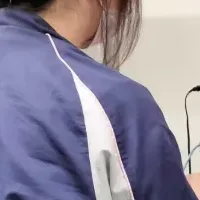
Exploring MicroCloud Hologram's Quantum Neural Network Technology for AI Advancements
Unveiling MicroCloud Hologram Inc.'s Quantum Neural Network Technology
In a groundbreaking step towards the confluence of quantum mechanics and artificial intelligence, MicroCloud Hologram Inc. (NASDAQ: HOLO) has embarked on an ambitious project to explore Continuous Variable Quantum Neural Networks (CV-QNN). This innovative approach aims to integrate the principles of quantum computing with neural networks, allowing for the development of specialized quantum models that include convolutional, recursive, and residual networks. The implications of this research could transform the landscape of quantum artificial intelligence.
What are CV-QNNs?
The essence of CV-QNN technology lies in conducting affine transformations and nonlinear mappings within neural networks using layers of continuously parametrized quantum gates and nonlinear activation functions. Unlike discrete quantum bit architectures, the CV architecture encodes information through continuous degrees of freedom, such as the amplitude and phase of electromagnetic fields. This fundamental difference aligns more closely with classical information processing, streamlining the implementation of advanced neural networks.
The operational units in CV architecture encompass both Gaussian and non-Gaussian transformations of quantum states. These transformations facilitate foundational operations in neural networks—specifically, linear transformations and bias additions through the use of Gaussian gates. Gaussian gates, which uphold the Gaussian distribution of quantum states, allow precise control over quantum state parameters, effectively simulating linear operations akin to those found in classical neural networks.
Incorporating Nonlinear Functions
Nonlinear activation functions are pivotal for enabling networks to capture complex feature representations. In traditional networks, functions such as ReLU, Sigmoid, and Tanh facilitate this capability. In the CV framework, non-Gaussian gates, such as polarized optical nonlinear operations or non-Gaussian optical crystals, introduce necessary nonlinearity. This enhancement significantly bolsters the expressiveness and functionality of CV-QNNs, allowing them to accommodate more intricate functions.
The Layered Structure of CV-QNN
MicroCloud's CV-QNN employs a layered architecture reminiscent of a multilayer perceptron found in conventional neural networks. Each layer is composed of multiple continuously parameterized quantum gates, enabling the execution of sophisticated nonlinear transformations while maintaining quantum coherence. This structure is theorized to be universally adaptable, meaning, with the right combinations of gate operations, it can approximate any continuous function.
Moreover, by leveraging quantum superposition and entanglement, CV-QNN presents the opportunity for exponential speed improvements in handling large datasets. The continual alignment of the CV architecture with classical computing paradigms enhances scalability and ensures seamless integration with pre-existing classical computing systems. The design takes full advantage of the energy efficiency features of continuous-variable quantum computing, permitting complex operations at reduced resource costs.
Bountiful Applications Ahead
The potential applications for CV-QNNs are vast and varied. They promise advancements in areas such as image classification, object detection, semantic segmentation through quantum convolutional networks, and improved efficiencies in text generation, sentiment analysis, and machine translation via quantum recursive networks. Additionally, they may offer accelerated solutions to challenges in quantum chemistry, materials science, and complex simulations, while enhancing market forecasting and risk assessment capabilities.
Challenges and the Path Ahead
While the CV-QNN technology presents exciting prospects, it faces several hurdles, notably the stability of quantum hardware and resource optimization. There are concerns regarding the potential errors accumulated during the training of quantum networks. Learning to overcome these obstacles will require innovative designs for quantum optimization algorithms, representing both a challenge and an opportunity for further research and development within both the academic and industrial sectors.
As quantum technology progressively reshapes our world, HOLO's CV-QNN exemplifies a pioneering computational tool, poised to potentially redefine artificial intelligence limits. Its ongoing development harbors the promise of becoming a core driving force for next-generation intelligent systems, whether in scientific exploration or resolving complex industry challenges. As the capabilities of CV-QNN technology unfold, it is expected to amplify opportunities for breakthroughs across multiple disciplines.
Topics Consumer Technology)










【About Using Articles】
You can freely use the title and article content by linking to the page where the article is posted.
※ Images cannot be used.
【About Links】
Links are free to use.